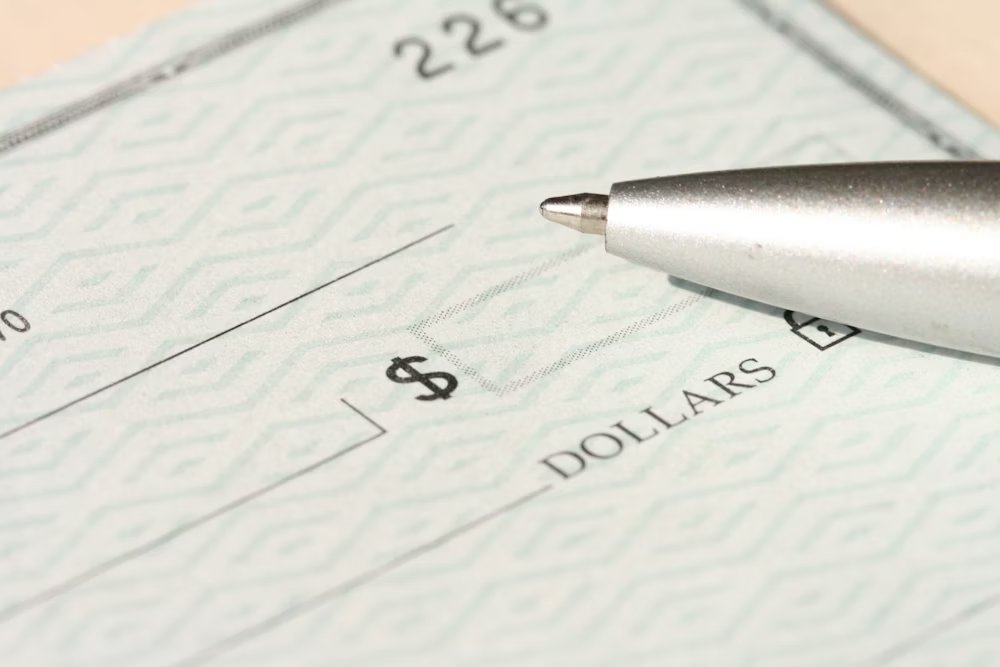How to provide the first paycheck when you're self-employed
Being self-employed is liberating but paying oneself isn't always easy. Whether you're running a big business or a startup, or a freelancer, deciding on your first paycheck is very important. Your first paycheck sets the tempo for your remuneration as the business progresses.
How to provide the first paycheck when you're self employed? You need to figure out three essentials to provide your first paycheck. Things like; how much to charge customers for your services, what to pay yourself, and how to pay yourself. Choosing the correct business structure is critical when processing payroll for oneself versus staff in order to save taxes.

Setting up a self-employed payroll system is essential for controlling profitability and cash flow by determining how much and how frequently to pay. Payroll services make it simple and assist firms with tax law compliance.
While payroll software is not required if you only pay yourself, as your team grows, you may pay your employees as frequently as you want: weekly, bimonthly, monthly, and so on. The software may be installed in a matter of days, and you can pay yourself by direct deposit, or get your first paycheck.
How Much to Charge Customers
Whether you operate as a small business owner or work as a freelancer, determining business income from your goods or services is challenging, especially when considering business expenses and managing your business bank account.
Along with knowing your clients and anticipating their emotional reactions to your pricing, there is a lot of arithmetic involved. Here are a few straightforward tools to assist you in determining how much to charge.Figuring out what to charge your customers especially as a service provider is no easy feat.
Set it too high and you lose customers to your competition. Set it too low, and you are out of business before you get started. How do you do it? You can figure this out by investigating what others in your line of business are charging for their services and products.
Aim for the average amount per skillset/qualification. The next step is observing the market for your business and trying to figure out what sets you apart from your competitors. Then you determine your price.
What to Pay Yourself

Deciding your first paycheck depends on business owner pay, your skillset, the cost of managing personal and business expenses, and tracking the time invested using bank statements in your personal and business accounts.
After conducting thorough research, including consulting with a tax professional and reviewing your business plan, it's time to align the available data with your personal income expectations and the projected cash flow.
If you’re a newbie among small business owners, you might need to set your price at the lower end to accommodate local taxes and Medicare taxes, while also considering the typical income tax and business expense.
If you've built a reasonable portfolio or possess an advanced skillset as a sole proprietor in a limited liability company, then set a price that reflects your owner's equity, considering the tax implications and your own salary. Be careful not to price yourself too low as this can boomerang.
Low self-pricing might give potential customers the stink that you don’t know what you're doing.From the moment your customers start coming, you must be articulate enough to keep track of the amount of time spent per job or project.
This will enable you to figure out how many hours you put into your work. It will serve as a guideline for pricing when charging clients and also a guideline for setting up your first paycheck.
You can pay yourself as a business owner in two ways:
-
Wage: In your S corp or C corporation, you pay yourself a regular monthly salary and handle payroll taxes through a structured payroll schedule, just as you would for any company employee. Businesses that are organized as S-corporations, C-corporations, or limited liability companies subject to corporate taxation are required by law to comply with this. According to the IRS's "reasonable" compensation standard, your pay should be equal to what someone else in your industry earning the same position would earn.
-
Owner's draw: You periodically take money (in cash or in kind) from the business profits of your unincorporated business, ensuring to keep track of these withdrawals through your personal bank account to manage your own taxes efficiently. Owner's equity, also known as your equity in the company, is the maximum you can withdraw. Although you are not required to pay taxes in advance each time you withdraw money, it is a good idea to budget for your tax payment by routinely setting aside money.
How to Pay Yourself?

This is the major question for providing your first paycheck when you're self-employed. But why the emphasis on the first paycheck? That’s because the first paycheck sets the standard for subsequent self-payment as your enterprise continues.
Even when your business grows above your starting level, needing some adjustment to your regular paycheck, the first paycheck always serves as a foundation to build on.
When working for yourself, you need to put in some effort to figure out the payment method that best suits you based on what you do. Two fundamental types of payments to keep in mind are:
The owner’s draw method
This method allows you to draw money from your business earnings, considering your cash flow issues and ensuring enough funds remain for payroll taxes and necessary business expenses.
You don't have a fixed income because you can influence how much you draw depending on your business performance. You can draw as much money as you want and as frequently as you want. So long as there is money in the account.
There is more liberty andflexibility with this method but you also must be wary of how much money is available for growing the business, paying bills, and taxation. Income taxes aren't automatically deducted, requiring you to maintain a separate bank account for tax payments, and be ready to manage your tax liability through self-reporting.
Matically deducted as you must be ready to do a self-report and pay total taxes during taxation time. It also requires lots of personal tax planning so you'll be doing lots of extra work with your taxes.Taxation with the owner’s draw will vary depending on the type of business that you are doing.
-
Taxation for Sole proprietorship: Here, owner’s draws are considered as personal income, and taxation is managed accordingly, focusing on maintaining clear bank statements and meeting tax bill requirements. This is due to your complete entitlement to your enterprise's money as a sole proprietor, which impacts your cash flow and requires careful income tax management. In this setup, there are no shareholders or stockholders to answer to, giving independent contractors and self-employed people greater flexibility in how they manage their business accounts and handle personal and business expenses.
-
Taxation for partnership: This is also viewed as personal income like in sole proprietorship. The only difference here is that one person does not claim all the revenue generated from the business. All earnings are divided among partners and taxed accordingly, with business expenses and tax liability evenly distributed, reflecting on each partner's personal income tax.
-
Taxation for limited liability companies: Taxation is the same as with sole proprietorship and partnership except that the laws that control taxes on limited liability companies vary according to state laws. Before deciding on your payment method or how to pay employees, it's crucial to review state laws to understand the tax implications for small business owners and ensure compliance with cash flow problems.
The salary method
Here, you receive a fixed amount of money regularly. Personal income taxes are deducted automatically from your paycheck. The salary method makes it easier for you to track cash flow as you will not be taking money from the business account willingly.
However, you are saddled with the choice of what amount is reasonable for you while keeping your enterprise operational.
How to choose
How you pay yourself is determined by these elements.
Business Organization
You can only accept a salary and/or an owner's draw if your company is a sole proprietorship, partnership, LLC, S-corporation, or C-corporation.
In general, if your business is a sole proprietorship, partnership, or LLC, you can take an owner's draw, and if it's a corporation or an LLC taxed as a corporation, you can take a salary. Your business structure's needs and tax benefits can be explained to you by an accountant.
Business Setting
Many sole proprietors refuse to accept any funding in the beginning, which impacts their ability to manage self employment taxes and can affect their overall net profit.
But as soon as your company is more stable or you have a good idea of cash flow, start considering paying yourself so that you may include that sum in the operating costs of the company.
Private Funds
Your own commitments, including a mortgage, vehicle loan, and personal expenses, should be managed by the regular salary amount and payment method you choose, ensuring you meet your personal tax return obligations.
The payment amount and manner you choose should cover all essential costs, including your mortgage, car loan, and other necessary expenses. When looking for small-business funding, you may be at a disadvantage if your finances are weak or if you don't pay yourself at all.
Guidelines For Your First Paycheck

Regardless of which method of self-payment you choose, there are a few guidelines to a successful first paycheck:
-
A business type account must be kept separate from a personal tax return to accurately manage self employment taxes and track net profit, crucial for understanding your other income sources.
-
If you're using the owner’s draw method, ensure that your payments adhere to a step by step guide for regular salary withdrawals, which will help maintain consistent personal expenses and manage tax return commitments.
-
Use payroll software or a service to step by step guide you in recording your payments, generate paystubs, and customer receipts, ensuring tax return compliance and recurring transfer accuracy. (Paystubsnow comes highly recommended).
-
Ensure you always maintain sufficient cash flow to cover personal expenses and social security contributions, vital for the smooth operation of your business type.
-
Don't delay tax payments so as not to have outrageous taxation values later on.

